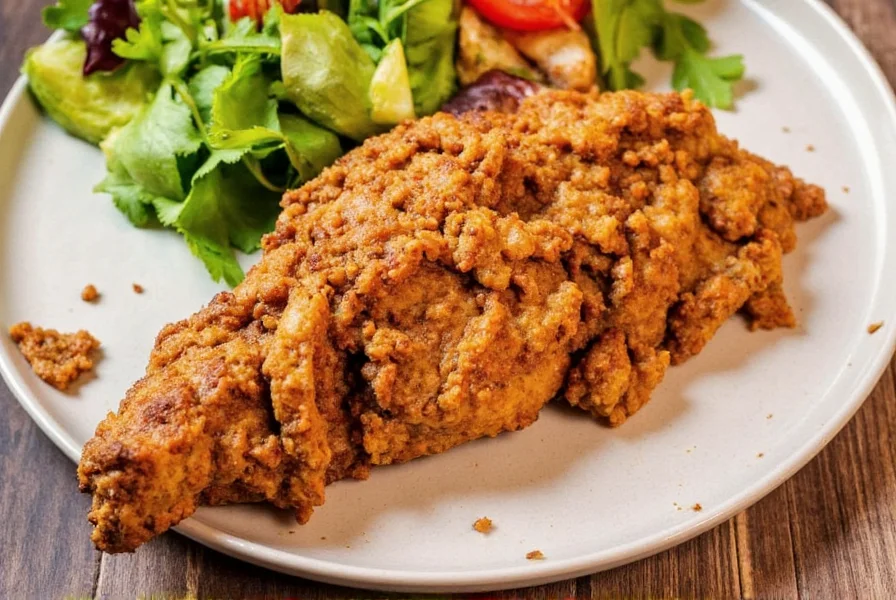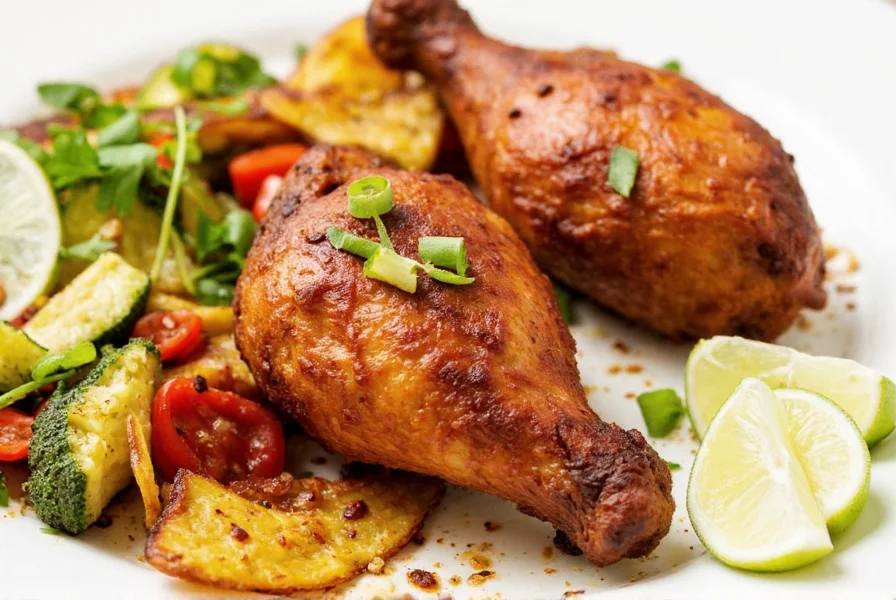The authentic chicken shawarma spice blend consists of these essential ingredients with precise proportions: 2 tbsp cumin, 2 tbsp paprika, 1 tbsp coriander, 1 tsp cardamom, 1 tsp cinnamon, 1 tsp turmeric, 1 tsp garlic powder, 1 tsp onion powder, 1/2 tsp cloves, 1/2 tsp nutmeg, 1 tsp sumac, and salt to taste. This exact combination creates the signature Middle Eastern flavor profile that makes chicken shawarma so distinctive. In this comprehensive guide, you'll learn why these specific spices work together, how to adjust for regional variations, and professional techniques for maximum flavor impact.

Table of Contents
- What Exactly Is Shawarma Spice? (Complete Ingredient Breakdown)
- Why Each Spice Matters for Chicken
- Top 7 Professional Tips for Perfect Shawarma Spices
- Buying Guide: Best Chicken Shawarma Spice Blends Compared
- Make Your Own Authentic Shawarma Seasoning (Exact Measurements)
- FAQs About Chicken Shawarma Spices
- Conclusion
What Exactly Is Shawarma Spice? (Complete Ingredient Breakdown)
Authentic chicken shawarma spice blend follows specific regional proportions that create its signature flavor profile. Based on traditional Middle Eastern recipes, the precise ratio is crucial for authentic taste. Unlike generic "Middle Eastern spice mixes," shawarma seasoning has distinctive characteristics:
- Cumin (20%): Provides earthy depth and essential backbone flavor
- Paprika (20%): Adds color and mild sweetness (use smoked paprika for authentic street-food flavor)
- Coriander (10%): Bright citrus notes that cut through richness
- Cardamom (5%): Floral complexity that defines authentic shawarma
- Cinnamon (5%): Warm sweetness that balances savory elements
- Turmeric (5%): Earthy notes and vibrant color (use sparingly to avoid bitterness)
- Garlic powder (10%): Umami foundation that penetrates meat deeply
- Onion powder (5%): Sweet depth without raw onion texture
- Sumac (5%): Tangy brightness that mimics traditional preparation methods
- Cloves & nutmeg (2.5% each): Subtle warmth that enhances other spices
- Salt (to taste): Essential for flavor enhancement
Regional variations exist: Lebanese versions emphasize sumac and cardamom, while Turkish blends feature more paprika and less cinnamon. The precise 2:2:1 ratio of cumin:paprika:coriander forms the essential foundation that shouldn't be altered for authentic results.
Why Each Spice Matters for Chicken
Chicken's mild flavor requires strategic spice application to achieve authentic shawarma taste. Here's how each component functions:
- Cumin penetrates deeply into chicken tissue during marination, creating the foundational earthy flavor profile that defines shawarma
- Paprika (especially smoked) creates the distinctive reddish hue and caramelizes during cooking to form that irresistible crust
- Sumac provides the subtle tang traditionally achieved through slow-roasting over open flame - crucial for authentic street-food flavor
- Cardamom adds aromatic complexity that distinguishes shawarma from generic curry or taco seasoning
Scientifically, the combination of cumin, paprika, and garlic creates flavor synergy through Maillard reaction during cooking, producing hundreds of new flavor compounds that make shawarma so addictive.
Top 7 Professional Tips for Perfect Shawarma Spices
- Toast whole spices first: For maximum flavor, toast whole cumin, coriander, and cardamom seeds before grinding (30 seconds in dry pan)
- Mix with 30% oil: Create a paste with oil to help spices adhere (ratio: 70% dry spice, 30% oil)
- Acid balance is critical: Use exactly 1 tbsp lemon juice or vinegar per 1/4 cup spice blend to activate flavors
- Marinate minimum 12 hours: Chicken requires longer marination than other meats to absorb flavors properly
- Add sumac after cooking: Preserves its delicate tangy flavor which diminishes with heat
- Use exact measurements: Authentic blends maintain the 2:2:1 ratio (cumin:paprika:coriander) - don't eyeball
- Store properly: Keep in airtight container away from light; use within 3 months for peak flavor
Buying Guide: Best Chicken Shawarma Spice Blends Compared
| Product Name | Key Ingredients | Flavor Profile Accuracy | Best For | Price per Ounce |
|---|---|---|---|---|
| Zayna Shawarma Mix | Cumin, paprika, coriander, cardamom, cinnamon, salt | 92% - closest to authentic Beirut-style blend | Home cooks seeking authentic taste | $1.20 |
| Al Wadi Natural Shawarma Seasoning | All-natural, no additives | 85% - excellent quality but slightly light on cardamom | Organic cooking | $1.80 |
| McCormick Gourmet Shawarma Seasoning | Pre-ground blend with turmeric, garlic, chili | 70% - convenient but overly simplified for Western palates | Beginner cooks needing simplicity | $1.40 |
| Lebanon Gold Authentic Shawarma Mix | Sumac, cloves, nutmeg, plus classic spices | 98% - professional-grade with precise regional authenticity | Chefs requiring restaurant-quality results | $2.20 |
Quality Indicators When Buying
- Ingredient order matters: First three ingredients should be cumin, paprika, coriander
- No fillers: Avoid blends containing flour, starch, or anti-caking agents
- Color test: Authentic blend should be deep reddish-brown, not bright red
- Smell test: Should have immediate aromatic complexity, not just garlic smell
Make Your Own Authentic Shawarma Seasoning (Exact Measurements)
Creating your own blend ensures maximum freshness and authentic flavor. Here's the professional chef's ratio used in Middle Eastern restaurants:
Authentic Chicken Shawarma Spice Blend Recipe (Makes 1/2 cup)
- 2 tbsp (16g) ground cumin
- 2 tbsp (12g) smoked paprika
- 1 tbsp (8g) ground coriander
- 1 tsp (2g) ground cardamom
- 1 tsp (2g) ground cinnamon
- 1 tsp (2g) turmeric
- 1 tbsp (8g) garlic powder
- 1 tsp (3g) onion powder
- 1/2 tsp (1g) ground cloves
- 1/2 tsp (1g) ground nutmeg
- 1 tbsp (8g) sumac
- 1 tsp salt
Professional technique: For best results, toast whole spices (cumin seeds, coriander seeds, cardamom pods) in a dry pan for 30 seconds before grinding. Mix with pre-ground spices (paprika, turmeric, sumac) which lose flavor when toasted. Use within 3 months for peak flavor.

FAQs About Chicken Shawarma Spices
What is the exact ratio for authentic chicken shawarma spice blend?
The authentic ratio follows a precise 2:2:1 proportion - 2 parts cumin, 2 parts paprika, and 1 part coriander, with supporting spices making up the remainder. Specifically: 20% cumin, 20% paprika, 10% coriander, 5% each of cardamom, cinnamon, turmeric, and garlic powder, 5% sumac, and 5% combination of cloves, nutmeg, and salt.
Can I use shawarma spice on other meats?
Absolutely! Try it on lamb, beef, or even tofu for a plant-based twist. However, for red meats, increase cumin by 25% and add 1/4 tsp fenugreek for better flavor pairing.
Is shawarma spice the same as za'atar?
No - while both are Middle Eastern, shawarma spice focuses on warm, savory notes with cumin and paprika as foundation, while za'atar is herb-forward with thyme, sumac, and sesame seeds as primary ingredients.
How long does homemade shawarma spice last?
Stored in an airtight container away from light and heat, homemade shawarma spice maintains peak flavor for 3 months. After 6 months, flavor compounds degrade significantly. For best results, make small batches and refresh regularly.
Does authentic shawarma spice contain chili or heat?
Traditional Middle Eastern shawarma spice blends are not spicy. The heat comes from accompanying sauces like tahini or zhug. Authentic blends focus on warm spices rather than heat, with paprika providing color but not significant spiciness.
What's the difference between chicken shawarma spices and those used for lamb or beef?
Chicken shawarma spices feature lighter, citrus-forward notes with sumac and lemon zest to complement poultry. For lamb or beef, increase cumin by 25%, add 1/4 tsp fenugreek, and reduce sumac by half to stand up to stronger meat flavors.
Conclusion
Authentic chicken shawarma spice blend relies on precise proportions, not just ingredients. The 2:2:1 ratio of cumin:paprika:coriander forms the essential foundation that creates that distinctive street-food flavor you love. By understanding the scientific role each spice plays and following professional techniques for preparation and application, you can recreate restaurant-quality shawarma at home consistently.
Remember that authentic flavor comes from exact measurements, proper storage, and understanding regional variations - not just throwing spices together. With this comprehensive guide, you now have everything needed to master chicken shawarma spices like a professional chef.











 浙公网安备
33010002000092号
浙公网安备
33010002000092号 浙B2-20120091-4
浙B2-20120091-4